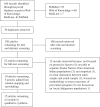A review of protective factors and causal mechanisms that enhance the mental health of Indigenous Circumpolar youth
- PMID: 24350066
- PMCID: PMC3860333
- DOI: 10.3402/ijch.v72i0.21775
A review of protective factors and causal mechanisms that enhance the mental health of Indigenous Circumpolar youth
Abstract
Objectives: To review the protective factors and causal mechanisms which promote and enhance Indigenous youth mental health in the Circumpolar North.
Study design: A systematic literature review of peer-reviewed English-language research was conducted to systematically examine the protective factors and causal mechanisms which promote and enhance Indigenous youth mental health in the Circumpolar North.
Methods: This review followed the Preferred Reporting Items for Systematic Reviews and Meta-Analyses (PRISMA) guidelines, with elements of a realist review. From 160 records identified in the initial search of 3 databases, 15 met the inclusion criteria and were retained for full review. Data were extracted using a codebook to organize and synthesize relevant information from the articles.
Results: More than 40 protective factors at the individual, family, and community levels were identified as enhancing Indigenous youth mental health. These included practicing and holding traditional knowledge and skills, the desire to be useful and to contribute meaningfully to one's community, having positive role models, and believing in one's self. Broadly, protective factors at the family and community levels were identified as positively creating and impacting one's social environment, which interacts with factors at the individual level to enhance resilience. An emphasis on the roles of cultural and land-based activities, history, and language, as well as on the importance of social and family supports, also emerged throughout the literature. More than 40 protective factors at the individual, family, and community levels were identified as enhancing Indigenous youth mental health. These included practicing and holding traditional knowledge and skills, the desire to be useful and to contribute meaningfully to one's community, having positive role models, and believing in one's self. Broadly, protective factors at the family and community levels were identified as positively creating and impacting one's social environment, which interacts with factors at the individual level to enhance resilience. An emphasis on the roles of cultural and land-based activities, history, and language, as well as on the importance of social and family supports, also emerged throughout the literature.
Conclusions: Healthy communities and families foster and support youth who are resilient to mental health challenges and able to adapt and cope with multiple stressors, be they social, economic, or environmental. Creating opportunities and environments where youth can successfully navigate challenges and enhance their resilience can in turn contribute to fostering healthy Circumpolar communities. Looking at the role of new social media in the way youth communicate and interact is one way of understanding how to create such opportunities. Youth perspectives of mental health programmes are crucial to developing appropriate mental health support and meaningful engagement of youth can inform locally appropriate and culturally relevant mental health resources, programmes and community resilience strategies.
Keywords: Arctic; Indigenous; Inuit; Inupiat; Sami; mental health; resilience; young people.
Figures
References
-
- Silviken A, Kvernmo S. Mental health and suicide. In: Young TK, Bjerregaard P, editors. Health transitions in Arctic populations. Toronto: University of Toronto Press; 2008. pp. 359–78.
-
- Lehti V, Niemela S, Hoven C, Mandell D, Sourander A. Mental health, substance use and suicidal behaviour among young indigenous people in the Arctic: a systematic review. Soc Sci Med. 2009;69:1194–203. - PubMed
-
- Ribova L. Individual and community well-being. Stefansson Arctic Institute. 2000. [cited 2013 Oct 1]. Available from: http://www.thearctic.is.
-
- Wexler L. Inupiat youth suicide and culture loss: changing community conversations for prevention. Soc Sci Med. 2006;63:2938–48. - PubMed
Publication types
MeSH terms
LinkOut - more resources
Full Text Sources
Other Literature Sources
Medical
Miscellaneous



